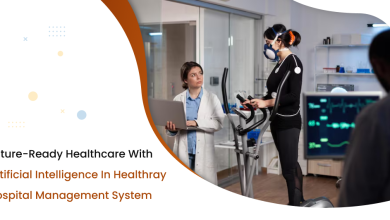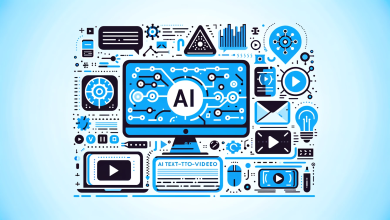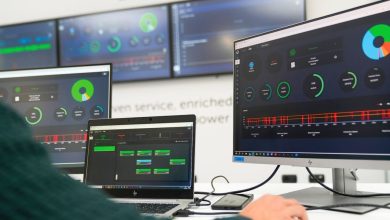
The dating phase of AI experimentation is over. As organizations move beyond initial trials and proof-of-concepts, they’re discovering that the real challenge isn’t whether AI can deliver value, it’s how to systematically integrate it into mission-critical business operations, to deliver value predictably, while maintaining control and accountability, with measurable outcomes.
The great transition: From pilot to production
The shift from AI experimentation to real-world deployment represents a fundamental transformation in how enterprises approach AI-powered transformation. Early adopters who once marveled at AI’s ability to generate content or answer questions are now demanding concrete business outcomes: reduced operational costs, accelerated processes and enhanced decision-making capabilities. This transition often brings with it the need to completely reengineer existing workflows. Organizations cannot simply overlay AI onto legacy processes and expect transformative results. A fundamental reengineering is the need of the hour, which includes redesigning workflows from the ground up, with responsible application frameworks that preserve human oversight and control.
The stakes are high. Companies that successfully navigate this transition gain competitive advantage through enhanced efficiency and innovation. Those that fail to adapt risk falling behind as AI-powered competitors capture market share through superior operational performance.
AI-first organizations are taking a holistic approach to AI integration
They are embedding AI and generative AI across multiple core functions – strategically prioritizing them after an ‘effort: outcome-value’ evaluation rather than limiting them to isolated use cases. For example, customer service departments are deploying AI agents that can handle complex inquiries with human-like understanding and empathy. Product development teams are using AI to accelerate innovation cycles, from ideation to prototyping. Marketing organizations are leveraging AI for personalizing experience at scale.
This comprehensive approach yields compounding benefits. When AI tools work in concert across different departments, they create synergies and shared learning that accelerates organizational transformation. Customer insights gathered by AI-powered service agents can inform product development decisions, while marketing AI tools can leverage product innovation data to create more compelling campaigns. The key to successful integration lies in maintaining a delicate balance between automation and human judgment.
Organizations must determine which decisions can be safely automated and which require human oversight, creating governance frameworks that ensure AI tools enhance rather than replace critical human capabilities.
Back Office Financial Process Transformation – an applied case
A restaurant chain’s international back office system process for accounts payable was successfully transformed by an agentic AI-powered, cloud-based solution, serving to reimagine the company’s financial operations. Traditional accounts payable processes often involve manual data entry, document verification and approval workflows that can take days or weeks to complete. In this case, the AI-powered solution automated these processes while maintaining full record accuracy and compliance standards. This resulted in enhanced efficiency through automated document processing, reduced processing times from days to hours and minimized errors through agentic AI-powered validation and verification.
These improvements free up human resources for higher-value activities while reducing operational costs. More importantly, the deployed solution demonstrates how agentic AI can operate within existing enterprise frameworks while making autonomous decisions. The AI-assisted accounts payable system can process invoices verify supplier information and route approvals without human intervention, yet it maintains complete audit trails and escalation protocols for exceptional cases that require validation.
The coming to age of agentic AI
Agentic AI represents the next evolution in enterprise artificial intelligence. Unlike traditional AI applications that respond to prompts or queries, agentic AI systems can make autonomous decisions within predetermined parameters, taking actions based on their understanding of business context and objectives. This capability is particularly powerful in operational contexts where decisions must be made quickly and consistently. Agentic AI can analyze complex situations, weigh multiple factors and take appropriate actions without waiting for human intervention.
In the restaurant use case discussed previously, the AI agent can automatically approve routine invoices while flagging unusual patterns or discrepancies for human review. The autonomous decision-making capability of agentic AI creates new possibilities for process optimization. Organizations can design workflows where AI agents handle routine decisions while escalating complex or high-stakes situations to human experts. This approach maximizes efficiency while maintaining appropriate oversight and control.
Balancing empowerment and accountability
The deployment of agentic AI systems raises important questions about empowerment, accountability and governance. When AI systems make autonomous decisions, organizations must establish clear frameworks for understanding and controlling their responses. Leaders must define the boundaries within which AI agents can operate, specifying which decisions they can make independently and which require human approval. They must also establish monitoring systems that track AI decision-making patterns and outcomes, ensuring that autonomous systems remain aligned with business objectives and regulatory requirements.
The challenge lies in empowering AI systems sufficiently to deliver operational benefits while maintaining enough control to ensure accountability. Organizations that strike this balance effectively can scale AI capabilities across their operations while managing risk and maintaining stakeholder confidence.
As agentic AI continues to mature, organizations need to prepare for a future where autonomous AI systems handle increasingly complex business processes. This requires investment in new capabilities: AI governance frameworks, monitoring systems and human-AI collaboration models that maximize the benefits of both artificial and human intelligence.
The organizations that thrive in this AI-powered future will be those that successfully balance automation with human judgment, efficiency with accountability and innovation with risk management. They will view AI not as a replacement for human capabilities but as a powerful amplifier that enables their workforce to focus on higher-value activities while AI handles routine operations.
The transition from AI experimentation to enterprise transformation is challenging, but the potential rewards are substantial. Organizations that commit to this journey today will be positioned to lead their industries tomorrow, powered by AI systems that deliver sustained competitive advantages through enhanced efficiency, innovation and customer value.





